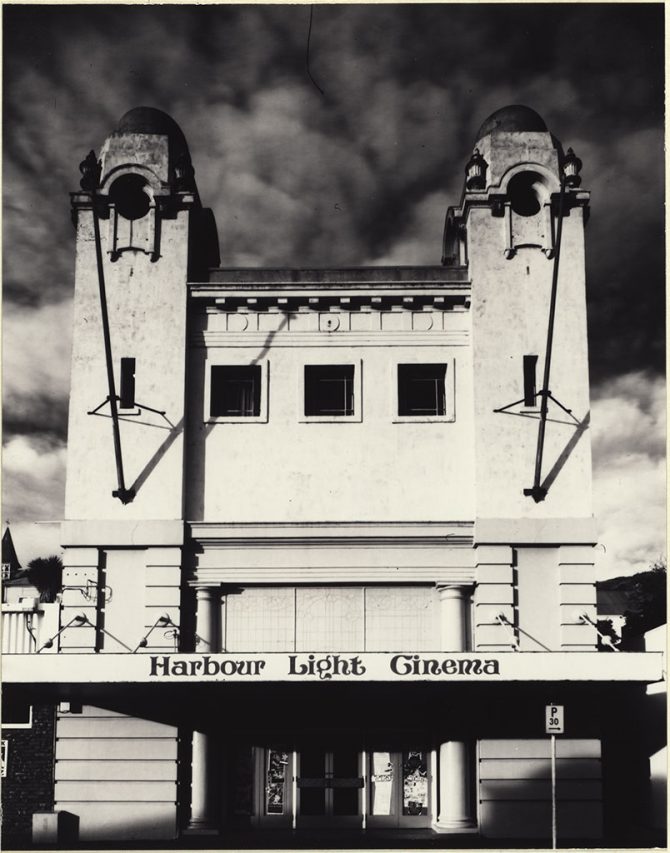The queue had started long before the official opening at 8pm and while they waited the crowd was entertained by musical selections from the Lyttelton Marine Band. The Deputy Mayor, J.T. Morton, started the official proceedings, apologising for the absence of the Mayor, Mr Radcliffe, who had been unable to be present due to illness. Mr O.T.J Alpers on behalf of the directors, spoke next, remarking on moving pictures being a great source of education, especially in war-time.
And then the films began rolling…a wild life film, followed by a humorous study entitled “When in Rome” and then the main attraction, a drama, “The Deep Purple”.

So began the life of the Harbour Lights Picture Theatre when it was officially opened on 20th March 1917.
Situated at 24 London Street it was built in 1916, reputedly designed by John and Maurice Guthrie. Arthur William Lane had purchased the land in June 1916, transferring the title to Lyttelton Pictures Ltd in September. Mr Lane would be the theatre’s first manager.
Two storeys high, with a mezzanine floor, the theatre could seat 550 people in both stalls and circle. Initially just films were screened but in 1920 the building was extended and a stage erected to accommodate theatre performances, the first one “The N.Z. Diggers” opening on the 4th December. The theatre was now able to be used for performances, concerts, public talks and other social events as well as screening films.
Over the years the Harbour Lights went through a number of changes including building damage when the clay bank at the rear of the theatre collapsed into the stage extension in 1925. The main building escaped unscathed so film screenings continued but the stage was out of action for some time. Talking pictures arrived in April 1930, and attendance at the theatre continued to be a regular social activity for the townspeople. In the 1940s the theatre was advertised for sale or lease but ownership only changed in the 1960s when Lang Masters took over running the cinema and again in 1972 when Leo Quinlivan took over the building and after a major refurbishment reopened it as a theatre. In 1980 it was once again a cinema when Frederick E. Read, a film librarian, took over ownership.
The 1980s saw a squash court added, the auditorium stripped, the building turned into a restaurant, and then a night club. By 1992 it had evolved into a licensed entertainment and function venue and it continued to operate as such until the earthquake in February 2011.
In April 2011 the Harbour Light Theatre was demolished.
Further information
- See photos of the Harbour Light on Flickr
- Read about other cinemas and theatres on Kete Christchurch
![Exterior view of the Theatre Royal, Christchurch, prior to opening [1907]](https://i0.wp.com/christchurchcitylibraries.com/heritage/photos/disc2/IMG0061.jpg)



